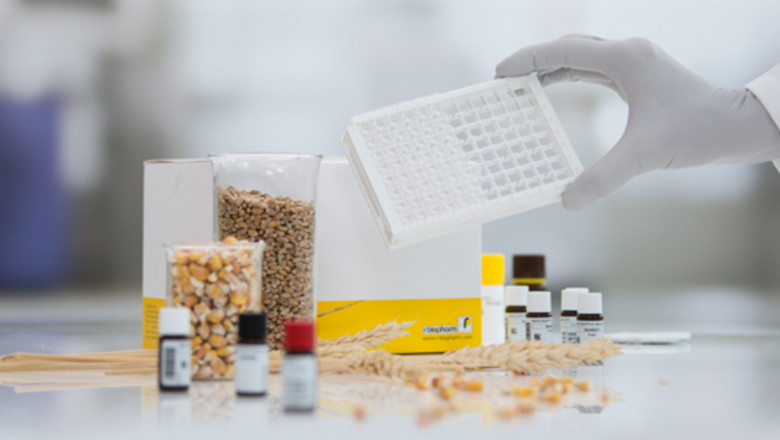views
Food Testing Gets Smarter with Advanced Molecular Methods
As the global food supply chain grows more complex, ensuring food safety requires ever more advanced analytical capabilities. Traditional microbiological techniques can be time-consuming and may fail to detect certain pathogens or contaminants at very low levels. Meanwhile, consumers increasingly demand transparency into how and where their food is produced. New molecular diagnostic technologies are empowering producers and regulators to address these challenges with greater speed, sensitivity and precision.
Next-Generation Sequencing Transforms Pathogen Detection
Next-generation sequencing (NGS) has emerged as a powerful forensic tool for tracing foodborne illness outbreaks. By deciphering the entire DNA or RNA genome of a pathogen isolate, NGS can identify outbreak strains and their genetic relationships with unprecedented resolution. This facilitates more targeted recalls and allows investigators to reconstruct contamination routes that traditional subtyping often cannot. Several recent multi-state outbreaks linked to produce have been solved thanks to NGS-based whole genome sequencing (WGS) of clinical and Food Diagnostics samples. As sequencing costs continue to plummet, WGS use for routine surveillance and monitoring of high-risk foods is becoming increasingly feasible.
qPCR Takes Molecular Testing to a New Level of Sensitivity
Quantitative PCR (qPCR) brings molecular diagnostics into a new realm of speed, sensitivity and specificity. By amplifying and simultaneously detecting a genomic target, qPCR methods can identify pathogens at concentrations orders of magnitude lower than conventional culture-based tests. This allows for detection even when an organism is present at only a few cells per test portion. Commonly used for detecting foodborne bacterial pathogens like Salmonella and Listeria, certain qPCR assays can now provide results in about an hour versus the days required using traditional culturing. The higher sensitivity of qPCR also means test results are less likely to yield false negatives, improving risk assessment.
Immunoassays Combine Antibody Specificity with Ease of Use
Lateral flow and ELISA immunoassays utilize pathogen-specific antibodies to rapidly detect targeted contaminants without bulky instrumentation. These simple, handheld formats are well-suited for on-site testing by producers and import screenings by border officials. While generally less sensitive than molecular methods, many immunoassays can still detect relevant contamination levels within 30 minutes. New multiplexed assays incorporating antibodies against several major allergens or toxins allow testing for multiple analytes from a single sample. As diagnostics move closer to the point of need, immunoassays will continue playing an important role in streamlined field screening and process verification.
Mass Spectrometry Illuminates Chemical Composition
Mass spectrometry has proven a highly versatile analytical technique for food chemistry applications. Used for confirming authenticity, quantifying residues and screening for adulteration, modern mass spec instruments can identify molecules with unmatched resolution and accuracy. Combined with separation techniques like gas or liquid chromatography, they enable detection of a vast array of chemical entities at trace levels. Sophisticated mass spec workflows now facilitate whole proteome or metabolome profiling of foods to uncover biomarkers of quality, maturity or geographical origin. The chemical insight provided by mass spec offers new validated methods to enforce labeling regulations and combat economically motivated fraud.
Biochemical Sensors Take Diagnostics to New Locations
The rise of integrated biochemical sensors heralds opportunities to decentralize analytical testing beyond centralized laboratories. Combining biological recognition elements with miniature analysis platforms, modern biosensors can identify targets as diverse as pathogens, toxins, allergens or indicators of spoilage directly in complex food matrices. Portable designs driven by battery power are being evaluated for on-farm and in-plant applications from raw material receipt through processing and packaging. Continuous online sensing also shows promise for real-time process monitoring and quality control. Advancing miniaturization may even support consumer-friendly home test kits in future. As technologies like electrochemical and photometric sensing mature, their adoption will facilitate timely, low-cost diagnostics throughout globalized food supply chains.
Future-Proofing Food Safety Requires Diagnostic Innovation
Ensuring a safe, sustainable and transparent food system presents evolving demands on analytical methodologies. Meeting challenges around globalization, climate change impacts and consumer expectations necessitates ever more rapid, sensitive and multiplexed diagnostics applied from field to fork. Technologies like next-gen sequencing, qPCR, advanced mass spectrometry and integrated biosensors exemplify directions driving the future of food testing. Combined with informatics applications, they will empower traceability, compliance validation and early detection better than ever before. Continued progress in analytical science innovation stands to future-proof the ability to assess and ensure food quality, safety and authenticity in service of public health for generations to come.
Get this Report in Japanese Language:
Get this Report in Korean Language:
About Author:
Money Singh is a seasoned content writer with over four years of experience in the market research sector. Her expertise spans various industries, including food and beverages, biotechnology, chemical and materials, defense and aerospace, consumer goods, etc. (https://www.linkedin.com/in/money-singh-590844163)






















Comments
0 comment